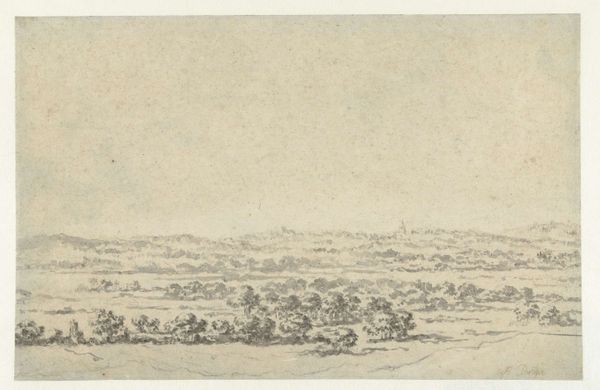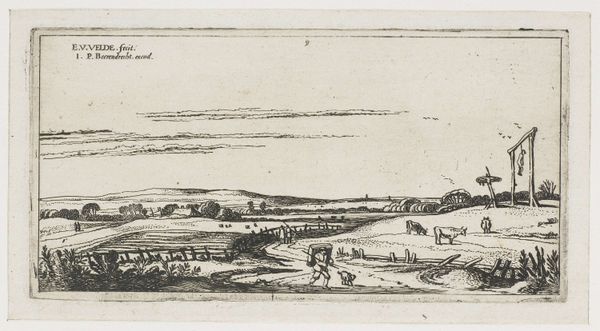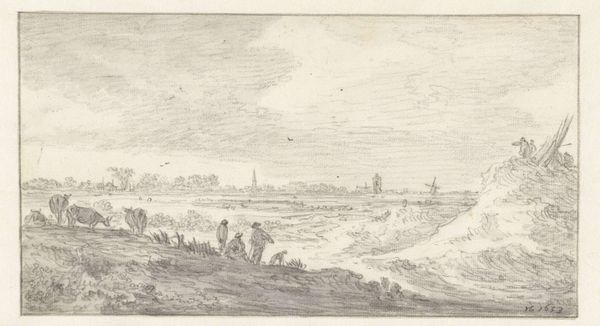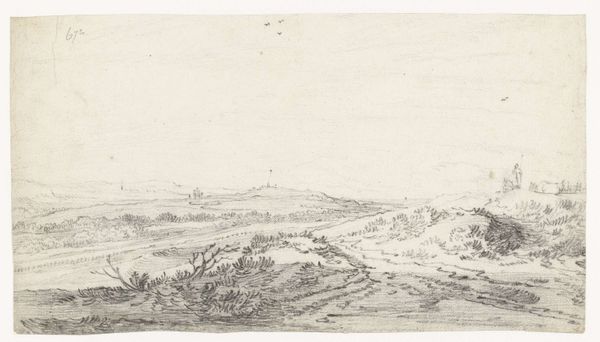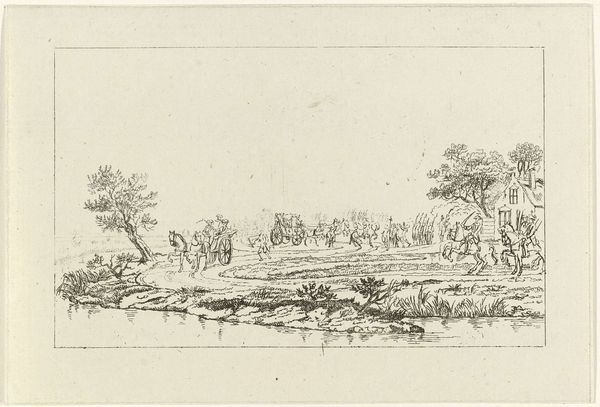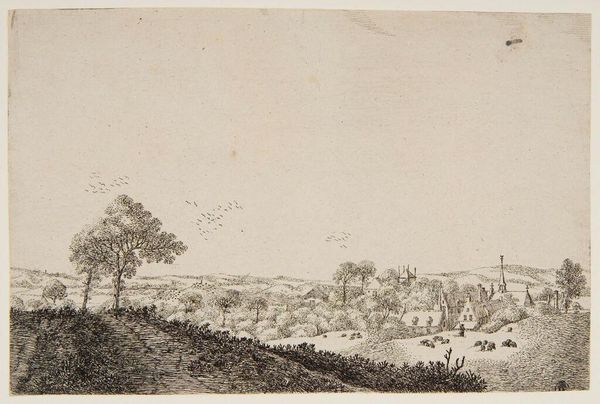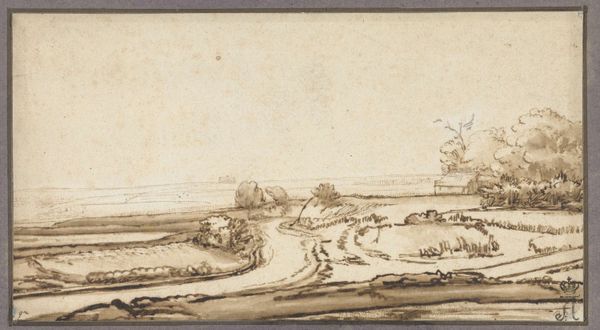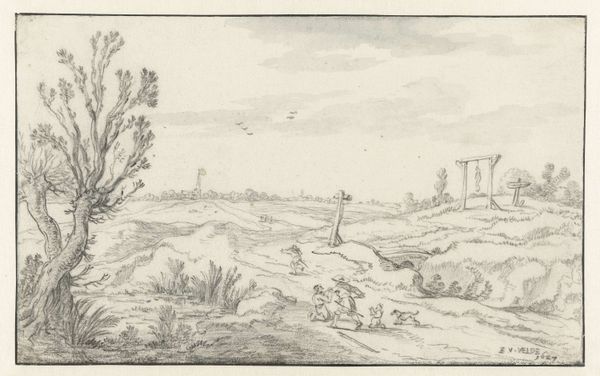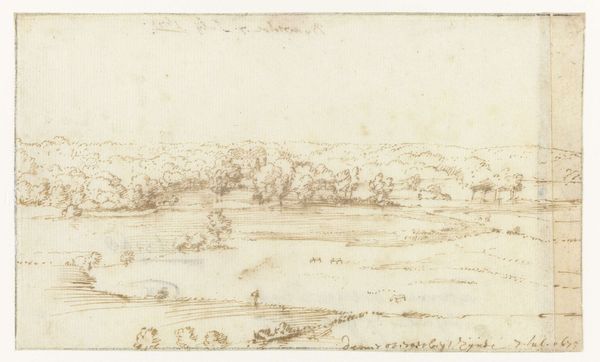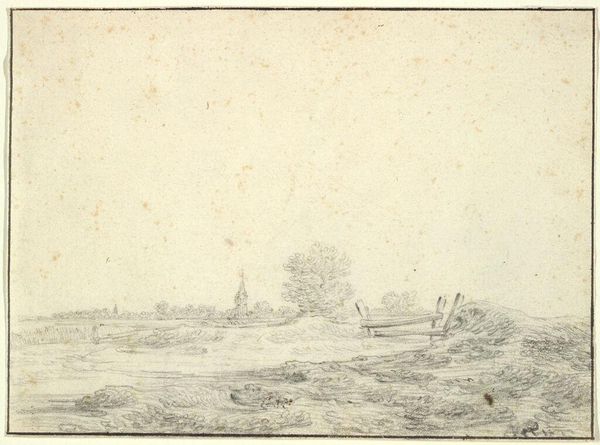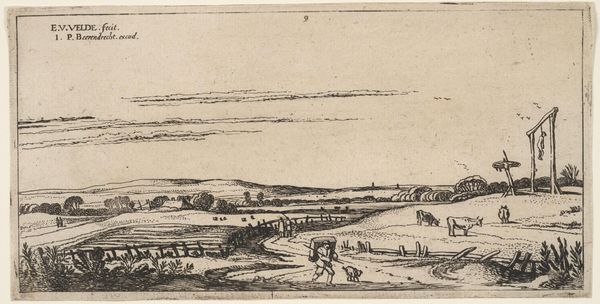
drawing, etching, paper, ink
#
drawing
#
dutch-golden-age
#
etching
#
landscape
#
etching
#
paper
#
ink
Dimensions: height 75 mm, width 144 mm
Copyright: Rijks Museum: Open Domain
Curator: Before us, we have Jan van Goyen’s “Vlak landschap,” a drawing and etching in ink on paper, created sometime between 1606 and 1656. It's currently held in the Rijksmuseum collection. Editor: It has this quiet, almost melancholic feel. The tones are muted, the line work so delicate, and it suggests vast open spaces despite the work being quite small, I imagine. It feels very Northern European in its sensibility. Curator: That melancholic feel, I think, comes from van Goyen’s depiction of the landscape as more than just scenery. During the Dutch Golden Age, landscapes became vehicles for expressing national identity and the relationship of its people to the land. The flatness, what translates to 'flat landscape' suggests not only geographical reality, but also perhaps, the relatively egalitarian social structure of the time. It could reflect a kind of cultural humility. Editor: The figures, though small, they provide an important symbolic function, grounding the human element within the grand scheme of nature. Notice how the figures are rendered, their clothing, posture—details suggesting their social roles and their connection to the land itself. I'd guess at something agricultural, if not purely recreational. Curator: Precisely. These weren't romanticized visions of untouched wilderness, but depictions of a lived-in, worked-upon landscape. The Dutch had transformed their terrain through drainage and dike-building. It speaks to ideas of environmental manipulation but in the early stages of development that modernly brings us ecological considerations of what we, too, must reckon with today. The very flat horizon line that seems like a pure design decision speaks, therefore, also about that labor, and control, exercised over nature. Editor: It's quite fascinating how van Goyen, through deceptively simple imagery, captures something so much bigger about a people's relationship to place and power. It's more than meets the eye upon first glance. The landscape carries within it so much more information of cultural significance, subtly presented through symbol and structure. Curator: Exactly, by looking at Dutch landscape painting, and etching in this case, with contemporary eyes we are made aware that even then their environment wasn't separate from culture, and history. The land itself is a record. Editor: Well said, the landscape as a testament of shared experiences, visually representing history, societal structures and a collective identity.
Comments
No comments
Be the first to comment and join the conversation on the ultimate creative platform.
